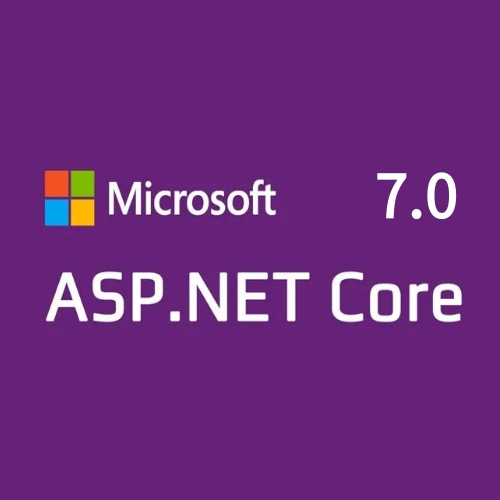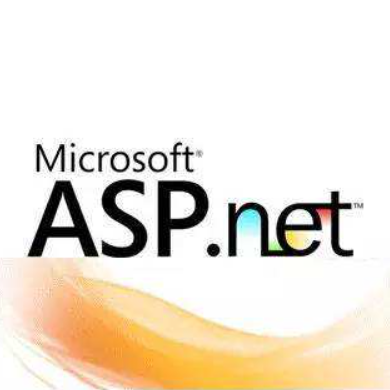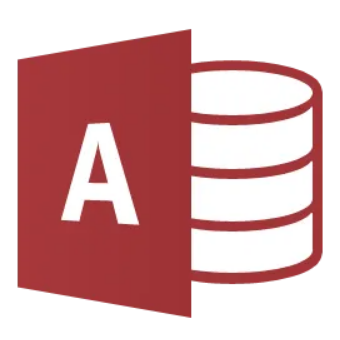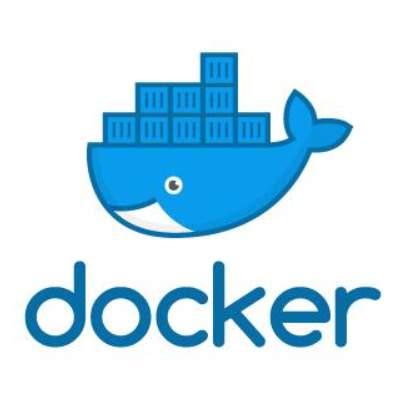本文演示如何将现有 ASP.NET HTTP 模块和处理程序从 system.webserver 迁移到 ASP.NET Core 中间件。
重新访问的模块和处理程序
在继续讨论 ASP.NET Core 中间件之前,让我们先回顾一下 HTTP 模块和处理程序如何工作:
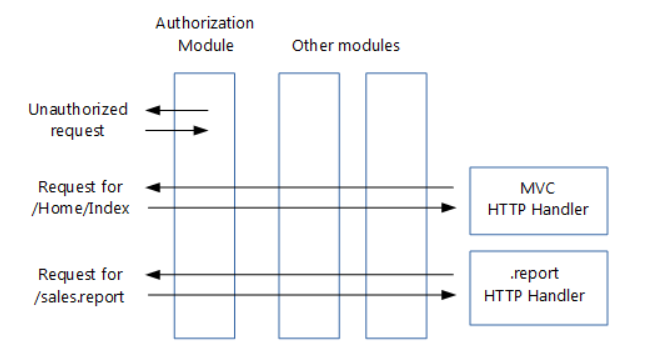
处理程序是:
- 实现 IHttpHandler 的类
- 用于处理具有给定文件名或扩展名(如 .report)的请求
- 在 Web.config 中进行配置
模块是:
- 实现 IHttpModule 的类
- 对每个请求进行调用
- 能够短路(停止请求的进一步处理)
- 能够添加到 HTTP 响应,或创建自己的响应
- 在 Web.config 中进行配置
模块处理传入请求的顺序取决于:
- 由 ASP.NET 触发的序列事件,如 BeginRequest 和 AuthenticateRequest。 有关完整列表,请参见System.Web.HttpApplication。 每个模块都可以为一个或多个事件创建处理程序。
- 它们在 Web.config 中进行配置的顺序(对于同一事件)。
除了模块之外,可以将生命周期事件的处理程序添加到 Global.asax.cs 文件。 这些处理程序在所配置的模块中的处理程序之后运行。
从处理程序和模块到中间件
中间件比 HTTP 模块和处理程序更简单:
- 模块、处理程序、Global.asax.cs、Web.config(IIS 配置除外)和应用程序生命周期都不存在
- 模块和处理程序的角色由中间件接管
- 中间件使用代码而不是在 Web.config 中进行配置
- 管道分支使你可以不仅基于 URL,而且基于请求标头、查询字符串等向特定中间件发送请求。
中间件与模块非常相似:
- 原则上针对每个请求进行调用
- 能够通过不将请求传递到下一个中间件来使请求短路
- 能够创建自己的 HTTP 响应
中间件和模块采用不同顺序进行处理:
- 中间件的顺序基于它们插入请求管道中的顺序,而模块的顺序主要基于 System.Web.HttpApplication 事件。
- 针对响应的中间件顺序与针对请求的顺序相反,而模块的顺序对于请求和响应是相同的
- 请参阅使用 IApplicationBuilder 创建中间件管道
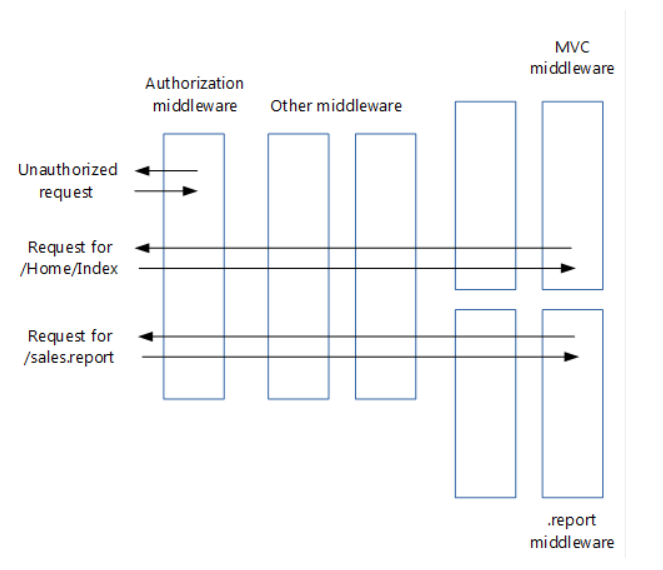
在上图中,请注意身份验证中间件如何使请求短路。
将模块代码迁移到中间件
现有 HTTP 模块类似于下面这样:C#复制
// ASP.NET 4 moduleusing System;using System.Web;namespace MyApp.Modules{public class MyModule : IHttpModule{public void Dispose(){}public void Init(HttpApplication application){application.BeginRequest += (new EventHandler(this.Application_BeginRequest));application.EndRequest += (new EventHandler(this.Application_EndRequest));}private void Application_BeginRequest(Object source, EventArgs e){HttpContext context = ((HttpApplication)source).Context;// Do something with context near the beginning of request processing.}private void Application_EndRequest(Object source, EventArgs e){HttpContext context = ((HttpApplication)source).Context;// Do something with context near the end of request processing.}}}
如中间件页面中所示,ASP.NET Core 中间件是一个类,它会公开采用 HttpContext 并返回 Task 的 方法。 新中间件类似于下面这样:C#复制
// ASP.NET Core middlewareusing Microsoft.AspNetCore.Builder;using Microsoft.AspNetCore.Http;using System.Threading.Tasks;namespace MyApp.Middleware{public class MyMiddleware{private readonly RequestDelegate _next;public MyMiddleware(RequestDelegate next){_next = next;}public async Task Invoke(HttpContext context){// Do something with context near the beginning of request processing.await _next.Invoke(context);// Clean up.}}public static class MyMiddlewareExtensions{public static IApplicationBuilder UseMyMiddleware(this IApplicationBuilder builder){return builder.UseMiddleware<MyMiddleware>();}}}
上面的中间件模板取自有关编写中间件的部分。
通过 MyMiddlewareExtensions 帮助程序类可以更轻松地在 类中配置中间件。 UseMyMiddleware 方法会将中间件类添加到请求管道。 中间件所需的服务会注入中间件的构造函数中。
模块可能会终止请求,例如如果用户未获得授权:C#复制
// ASP.NET 4 module that may terminate the requestprivate void Application_BeginRequest(Object source, EventArgs e){HttpContext context = ((HttpApplication)source).Context;// Do something with context near the beginning of request processing.if (TerminateRequest()){context.Response.End();return;}}
中间件通过不对管道中的下一个中间件调用 Invoke 来处理此问题。 请记住,这不会完全终止请求,因为在响应通过管道返回时,仍会调用以前的中间件。C#复制
// ASP.NET Core middleware that may terminate the requestpublic async Task Invoke(HttpContext context){// Do something with context near the beginning of request processing.if (!TerminateRequest())await _next.Invoke(context);// Clean up.}
将模块的功能迁移到新中间件时,你可能会发现代码未编译,因为 HttpContext 类在 ASP.NET Core 中进行了重大更改。 稍后,你将了解如何迁移到新的 ASP.NET Core HttpContext。
将模块插入迁移到请求管道中
HTTP 模块通常使用 Web.config 添加到请求管道:XML复制
<?xml version="1.0" encoding="utf-8"?><!--ASP.NET 4 web.config--><configuration><system.webServer><modules><add name="MyModule" type="MyApp.Modules.MyModule"/></modules></system.webServer></configuration>
对此进行转换的方法是在 类中将新中间件添加到请求管道:C#复制
public void Configure(IApplicationBuilder app, IHostingEnvironment env, ILoggerFactory loggerFactory){loggerFactory.AddConsole(Configuration.GetSection("Logging"));loggerFactory.AddDebug();if (env.IsDevelopment()){app.UseDeveloperExceptionPage();app.UseBrowserLink();}else{app.UseExceptionHandler("/Home/Error");}app.UseMyMiddleware();app.UseMyMiddlewareWithParams();var myMiddlewareOptions = Configuration.GetSection("MyMiddlewareOptionsSection").Get<MyMiddlewareOptions>();var myMiddlewareOptions2 = Configuration.GetSection("MyMiddlewareOptionsSection2").Get<MyMiddlewareOptions>();app.UseMyMiddlewareWithParams(myMiddlewareOptions);app.UseMyMiddlewareWithParams(myMiddlewareOptions2);app.UseMyTerminatingMiddleware();// Create branch to the MyHandlerMiddleware.// All requests ending in .report will follow this branch.app.MapWhen(context => context.Request.Path.ToString().EndsWith(".report"),appBranch => {// ... optionally add more middleware to this branchappBranch.UseMyHandler();});app.MapWhen(context => context.Request.Path.ToString().EndsWith(".context"),appBranch => {appBranch.UseHttpContextDemoMiddleware();});app.UseStaticFiles();app.UseMvc(routes =>{routes.MapRoute(name: "default",template: "{controller=Home}/{action=Index}/{id?}");});}
在管道中插入新中间件的确切位置取决于它作为模块处理的事件(BeginRequest、EndRequest 等) 及其在 Web.config 的模块列表中的顺序。
如前所述,在 ASP.NET Core 中没有应用程序生命周期,中间件处理响应的顺序与模块使用的顺序不同。 这可能会使排序决策更具挑战性。
如果排序成为问题,可以将模块拆分为多个可以独立排序的中间件组件。
将处理程序代码迁移到中间件
HTTP 处理程序类似于下面这样:C#复制
// ASP.NET 4 handlerusing System.Web;namespace MyApp.HttpHandlers{public class MyHandler : IHttpHandler{public bool IsReusable { get { return true; } }public void ProcessRequest(HttpContext context){string response = GenerateResponse(context);context.Response.ContentType = GetContentType();context.Response.Output.Write(response);}// ...private string GenerateResponse(HttpContext context){string title = context.Request.QueryString["title"];return string.Format("Title of the report: {0}", title);}private string GetContentType(){return "text/plain";}}}
在 ASP.NET Core 项目中,可将此转换为类似于下面这样的中间件:C#复制
// ASP.NET Core middleware migrated from a handlerusing Microsoft.AspNetCore.Builder;using Microsoft.AspNetCore.Http;using System.Threading.Tasks;namespace MyApp.Middleware{public class MyHandlerMiddleware{// Must have constructor with this signature, otherwise exception at run timepublic MyHandlerMiddleware(RequestDelegate next){// This is an HTTP Handler, so no need to store next}public async Task Invoke(HttpContext context){string response = GenerateResponse(context);context.Response.ContentType = GetContentType();await context.Response.WriteAsync(response);}// ...private string GenerateResponse(HttpContext context){string title = context.Request.Query["title"];return string.Format("Title of the report: {0}", title);}private string GetContentType(){return "text/plain";}}public static class MyHandlerExtensions{public static IApplicationBuilder UseMyHandler(this IApplicationBuilder builder){return builder.UseMiddleware<MyHandlerMiddleware>();}}}
此中间件与对应于模块的中间件非常相似。 唯一的真正区别是此处没有调用 _next.Invoke(context)。 这十分重要,因为处理程序位于请求管道末尾,因此没有下一个中间件要进行调用。
将处理程序插入迁移到请求管道中
HTTP 处理程序的配置在 Web.config 中进行,类似于下面这样:XML复制
<?xml version="1.0" encoding="utf-8"?><!--ASP.NET 4 web.config--><configuration><system.webServer><handlers><add name="MyHandler" verb="*" path="*.report" type="MyApp.HttpHandlers.MyHandler" resourceType="Unspecified" preCondition="integratedMode"/></handlers></system.webServer></configuration>
可以通过在 Startup 类中将新处理程序中间件添加到请求管道来对此进行转换,类似于从模块转换的中间件。 该方法的问题在于,它会将所有请求都发送到新处理程序中间件。 但是,你仅希望具有给定扩展名的请求到达中间件。 这会提供与 HTTP 处理程序相同的功能。
一种解决方案是使用 MapWhen 扩展方法为具有给定扩展名的请求对管道进行分支。 在添加其他中间件的相同 Configure 方法中执行此操作:C#复制
public void Configure(IApplicationBuilder app, IHostingEnvironment env, ILoggerFactory loggerFactory){loggerFactory.AddConsole(Configuration.GetSection("Logging"));loggerFactory.AddDebug();if (env.IsDevelopment()){app.UseDeveloperExceptionPage();app.UseBrowserLink();}else{app.UseExceptionHandler("/Home/Error");}app.UseMyMiddleware();app.UseMyMiddlewareWithParams();var myMiddlewareOptions = Configuration.GetSection("MyMiddlewareOptionsSection").Get<MyMiddlewareOptions>();var myMiddlewareOptions2 = Configuration.GetSection("MyMiddlewareOptionsSection2").Get<MyMiddlewareOptions>();app.UseMyMiddlewareWithParams(myMiddlewareOptions);app.UseMyMiddlewareWithParams(myMiddlewareOptions2);app.UseMyTerminatingMiddleware();// Create branch to the MyHandlerMiddleware.// All requests ending in .report will follow this branch.app.MapWhen(context => context.Request.Path.ToString().EndsWith(".report"),appBranch => {// ... optionally add more middleware to this branchappBranch.UseMyHandler();});app.MapWhen(context => context.Request.Path.ToString().EndsWith(".context"),appBranch => {appBranch.UseHttpContextDemoMiddleware();});app.UseStaticFiles();app.UseMvc(routes =>{routes.MapRoute(name: "default",template: "{controller=Home}/{action=Index}/{id?}");});}
MapWhen 采用以下参数:
- 一个 lambda,它采用
HttpContext,并在请求应沿着分支向下前进时返回true。 这意味着不仅可以基于请求扩展名,还可以基于请求标头、查询字符串参数等对请求进行分支。 - 一个 lambda,它采用
IApplicationBuilder并为分支添加所有中间件。 这意味着可以将其他中间件添加到处理程序中间件前面的分支。
中间件在对所有请求调用分支之前添加到管道;分支对它们没有影响。
使用选项模式加载中间件选项
某些模块和处理程序具有存储在 Web.config 中的配置选项。但是在 ASP.NET Core 中,使用新配置模型取代了 Web.config。
新配置系统提供了以下选项来解决此问题:
- 创建用于保存中间件选项的类,例如:C#复制
public class MyMiddlewareOptions { public string Param1 { get; set; } public string Param2 { get; set; } } - 存储选项值配置系统允许将选项值存储在所需的任何位置。 但是,大多数站点使用 appsettings.json,因此我们会采用该方法:JSON复制
{ "MyMiddlewareOptionsSection": { "Param1": "Param1Value", "Param2": "Param2Value" } }此处的 MyMiddlewareOptionsSection 是节名称。 它不必与选项类的名称相同。 - 将选项值与选项类关联选项模式使用 ASP.NET Core 的依赖项注入框架将选项类型(例如
MyMiddlewareOptions)与具有实际选项的MyMiddlewareOptions对象关联。更新Startup类:- 如果使用 appsettings.json,请将它添加到
Startup构造函数中的配置生成器:
- 如果使用 appsettings.json,请将它添加到
public Startup(IHostingEnvironment env){var builder = new ConfigurationBuilder().SetBasePath(env.ContentRootPath).AddJsonFile("appsettings.json", optional: true, reloadOnChange: true).AddJsonFile($"appsettings.{env.EnvironmentName}.json", optional: true).AddEnvironmentVariables();Configuration = builder.Build();}
- 配置选项服务:
public void ConfigureServices(IServiceCollection services){// Setup options serviceservices.AddOptions();// Load options from section "MyMiddlewareOptionsSection"services.Configure<MyMiddlewareOptions>(Configuration.GetSection("MyMiddlewareOptionsSection"));// Add framework services.services.AddMvc();}
- 将选项与选项类关联:
public void ConfigureServices(IServiceCollection services){// Setup options serviceservices.AddOptions();// Load options from section "MyMiddlewareOptionsSection"services.Configure<MyMiddlewareOptions>(Configuration.GetSection("MyMiddlewareOptionsSection"));// Add framework services.services.AddMvc();}
- 将选项注入中间件构造函数。 这类似于将选项注入控制器。
public class MyMiddlewareWithParams{private readonly RequestDelegate _next;private readonly MyMiddlewareOptions _myMiddlewareOptions;public MyMiddlewareWithParams(RequestDelegate next,IOptions<MyMiddlewareOptions> optionsAccessor){_next = next;_myMiddlewareOptions = optionsAccessor.Value;}public async Task Invoke(HttpContext context){// Do something with context near the beginning of request processing// using configuration in _myMiddlewareOptionsawait _next.Invoke(context);// Do something with context near the end of request processing// using configuration in _myMiddlewareOptions}}
- 将中间件添加到 的 UseMiddleware 扩展方法负责依赖项注入。这并不限于
IOptions对象。 中间件所需的任何其他对象都可以通过这种方式注入。
通过直接注入加载中间件选项
选项模式的优点在于,它可在选项值与其使用者之间创建松散耦合。 将选项类与实际选项值相关联后,任何其他类都可以通过依赖项注入框架访问选项。 无需围绕选项值进行传递。
不过如果要通过不同选项使用两次相同中间件,则这会出现问题。 例如,在允许不同角色的不同分支中使用的授权中间件。 无法将两个不同选项对象与一个选项类关联。
解决方案是在 Startup 类中获取具有实际选项值的选项对象,并将这些内容直接传递给中间件的每个实例。
- 将第二个键添加到 appsettings.json若要将第二组选项添加到 appsettings.json 文件,请使用新键来唯一地标识它:
{"MyMiddlewareOptionsSection2": {"Param1": "Param1Value2","Param2": "Param2Value2"},"MyMiddlewareOptionsSection": {"Param1": "Param1Value","Param2": "Param2Value"}}
- 检索选项值并将它们传递给中间件。
Use...扩展方法(用于将中间件添加到管道)是要传入选项值的逻辑位置:
public void Configure(IApplicationBuilder app, IHostingEnvironment env, ILoggerFactory loggerFactory){loggerFactory.AddConsole(Configuration.GetSection("Logging"));loggerFactory.AddDebug();if (env.IsDevelopment()){app.UseDeveloperExceptionPage();app.UseBrowserLink();}else{app.UseExceptionHandler("/Home/Error");}app.UseMyMiddleware();app.UseMyMiddlewareWithParams();var myMiddlewareOptions = Configuration.GetSection("MyMiddlewareOptionsSection").Get<MyMiddlewareOptions>();var myMiddlewareOptions2 = Configuration.GetSection("MyMiddlewareOptionsSection2").Get<MyMiddlewareOptions>();app.UseMyMiddlewareWithParams(myMiddlewareOptions);app.UseMyMiddlewareWithParams(myMiddlewareOptions2);app.UseMyTerminatingMiddleware();// Create branch to the MyHandlerMiddleware.// All requests ending in .report will follow this branch.app.MapWhen(context => context.Request.Path.ToString().EndsWith(".report"),appBranch => {// ... optionally add more middleware to this branchappBranch.UseMyHandler();});app.MapWhen(context => context.Request.Path.ToString().EndsWith(".context"),appBranch => {appBranch.UseHttpContextDemoMiddleware();});app.UseStaticFiles();app.UseMvc(routes =>{routes.MapRoute(name: "default",template: "{controller=Home}/{action=Index}/{id?}");});}
- 使中间件可以采用选项参数。 提供
Use...扩展方法(它采用选项参数并将它传递给UseMiddleware)的重载。 使用参数调用UseMiddleware时,它会在实例化中间件对象时将参数传递给中间件构造函数。
public static class MyMiddlewareWithParamsExtensions{public static IApplicationBuilder UseMyMiddlewareWithParams(this IApplicationBuilder builder){return builder.UseMiddleware<MyMiddlewareWithParams>();}public static IApplicationBuilder UseMyMiddlewareWithParams(this IApplicationBuilder builder, MyMiddlewareOptions myMiddlewareOptions){return builder.UseMiddleware<MyMiddlewareWithParams>(new OptionsWrapper<MyMiddlewareOptions>(myMiddlewareOptions));}}
- 请注意这如何在
OptionsWrapper对象中包装选项对象。 这会实现中间件构造函数所需的IOptions。
迁移到新 HttpContext
你在前面曾看到,中间件中的 Invoke 方法采用类型为 HttpContext 的参数:
public async Task Invoke(HttpContext context)
HttpContext 在 ASP.NET Core 中进行了重大更改。 此部分演示如何将 System.Web.HttpContext 最常用的属性转换为新 。
HttpContext
HttpContext.Items 转换为:
IDictionary<object, object> items = httpContext.Items;
唯一请求 ID(无 System.Web.HttpContext 对应项)
提供每个请求的唯一 id。 包含在日志中会非常有用。
string requestId = httpContext.TraceIdentifier;
HttpContext.Request
HttpContext.Request.HttpMethod 转换为:
string httpMethod = httpContext.Request.Method;
HttpContext.Request.QueryString 转换为:
IQueryCollection queryParameters = httpContext.Request.Query;// If no query parameter "key" used, values will have 0 items// If single value used for a key (...?key=v1), values will have 1 item ("v1")// If key has multiple values (...?key=v1&key=v2), values will have 2 items ("v1" and "v2")IList<string> values = queryParameters["key"];// If no query parameter "key" used, value will be ""// If single value used for a key (...?key=v1), value will be "v1"// If key has multiple values (...?key=v1&key=v2), value will be "v1,v2"string value = queryParameters["key"].ToString();
HttpContext.Request.Url 和 HttpContext.Request.RawUrl 转换为:
// using Microsoft.AspNetCore.Http.Extensions;var url = httpContext.Request.GetDisplayUrl();
HttpContext.Request.IsSecureConnection 转换为:
var isSecureConnection = httpContext.Request.IsHttps;
HttpContext.Request.UserHostAddress 转换为:
var userHostAddress = httpContext.Connection.RemoteIpAddress?.ToString();
HttpContext.Request. 转换为:
IRequestCookieCollection cookies = httpContext.Request.Cookies;string unknownCookieValue = cookies["unknownCookie"]; // will be null (no exception)string knownCookieValue = cookies["cookie1name"]; // will be actual value
HttpContext.Request.RequestContext.RouteData 转换为:
var routeValue = httpContext.GetRouteValue("key");
HttpContext.Request.Headers 转换为:
// using Microsoft.AspNetCore.Http.Headers;// using Microsoft.Net.Http.Headers;IHeaderDictionary headersDictionary = httpContext.Request.Headers;// GetTypedHeaders extension method provides strongly typed access to many headersvar requestHeaders = httpContext.Request.GetTypedHeaders();CacheControlHeaderValue cacheControlHeaderValue = requestHeaders.CacheControl;// For unknown header, unknownheaderValues has zero items and unknownheaderValue is ""IList<string> unknownheaderValues = headersDictionary["unknownheader"];string unknownheaderValue = headersDictionary["unknownheader"].ToString();// For known header, knownheaderValues has 1 item and knownheaderValue is the valueIList<string> knownheaderValues = headersDictionary[HeaderNames.AcceptLanguage];string knownheaderValue = headersDictionary[HeaderNames.AcceptLanguage].ToString();
HttpContext.Request.UserAgent 转换为:
string userAgent = headersDictionary[HeaderNames.UserAgent].ToString();
HttpContext.Request.UrlReferrer 转换为:
string urlReferrer = headersDictionary[HeaderNames.Referer].ToString();
HttpContext.Request.ContentType 转换为:
// using Microsoft.Net.Http.Headers;MediaTypeHeaderValue mediaHeaderValue = requestHeaders.ContentType;string contentType = mediaHeaderValue?.MediaType.ToString(); // ex. application/x-www-form-urlencodedstring contentMainType = mediaHeaderValue?.Type.ToString(); // ex. applicationstring contentSubType = mediaHeaderValue?.SubType.ToString(); // ex. x-www-form-urlencodedSystem.Text.Encoding requestEncoding = mediaHeaderValue?.Encoding;
HttpContext.Request.Form 转换为:
if (httpContext.Request.HasFormContentType){IFormCollection form;form = httpContext.Request.Form; // sync// Orform = await httpContext.Request.ReadFormAsync(); // asyncstring firstName = form["firstname"];string lastName = form["lastname"];}
警告
仅当内容子类型为 x-www-form-urlencoded 或 form-data 时才读取窗体值。
HttpContext.Request.InputStream 转换为:
string inputBody;using (var reader = new System.IO.StreamReader(httpContext.Request.Body, System.Text.Encoding.UTF8)){inputBody = reader.ReadToEnd();}
警告
仅在管道末尾的处理程序类型中间件中才使用此代码。
对于每个请求,只能读取上面所示的原始正文一次。 在首次读取之后尝试读取正文的中间件会读取空正文。
这不适用于读取前面所示的窗体,因为该操作在缓冲区中完成。
HttpContext.Response
HttpContext.Response.Status 和 HttpContext.Response.StatusDescription 转换为:
// using Microsoft.AspNetCore.Http;httpContext.Response.StatusCode = StatusCodes.Status200OK;
HttpContext.Response.ContentEncoding 和 HttpContext.Response.ContentType 转换为:
// using Microsoft.Net.Http.Headers;var mediaType = new MediaTypeHeaderValue("application/json");mediaType.Encoding = System.Text.Encoding.UTF8;httpContext.Response.ContentType = mediaType.ToString();
HttpContext.Response.ContentType 自己也转换为:
httpContext.Response.ContentType = "text/html";
HttpContext.Response.Output 转换为:
string responseContent = GetResponseContent();await httpContext.Response.WriteAsync(responseContent);
HttpContext.Response.TransmitFile
ASP.NET Core 中的请求功能中讨论了如何提供文件。
HttpContext.Response.Headers
发送响应头比较复杂,因为如果在将任何内容写入响应正文后设置它们,则不会进行发送。
解决方案是设置恰好在开始向响应写入之前调用的回调方法。 最好在中间件中的 Invoke 方法开头执行此操作。 由此回调方法设置响应头。
下面的代码设置名为 SetHeaders 的回调方法:
public async Task Invoke(HttpContext httpContext){// ...httpContext.Response.OnStarting(SetHeaders, state: httpContext);
SetHeaders 回调方法会类似于下面这样:
// using Microsoft.AspNet.Http.Headers;// using Microsoft.Net.Http.Headers;private Task SetHeaders(object context){var httpContext = (HttpContext)context;// Set header with single valuehttpContext.Response.Headers["ResponseHeaderName"] = "headerValue";// Set header with multiple valuesstring[] responseHeaderValues = new string[] { "headerValue1", "headerValue1" };httpContext.Response.Headers["ResponseHeaderName"] = responseHeaderValues;// Translating ASP.NET 4's HttpContext.Response.RedirectLocationhttpContext.Response.Headers[HeaderNames.Location] = "http://www.example.com";// OrhttpContext.Response.Redirect("http://www.example.com");// GetTypedHeaders extension method provides strongly typed access to many headersvar responseHeaders = httpContext.Response.GetTypedHeaders();// Translating ASP.NET 4's HttpContext.Response.CacheControlresponseHeaders.CacheControl = new CacheControlHeaderValue{MaxAge = new System.TimeSpan(365, 0, 0, 0)// Many more properties available};// If you use .NET Framework 4.6+, Task.CompletedTask will be a bit fasterreturn Task.FromResult(0);}
HttpContext.Response.s
Cookie 在 Cookie 响应头中传递给浏览器。 因此,发送 cookie 需要与用于发送响应头相同的回调:
public async Task Invoke(HttpContext httpContext){// ...httpContext.Response.OnStarting(SetCookies, state: httpContext);httpContext.Response.OnStarting(SetHeaders, state: httpContext);
SetCookies 回调方法会类似于下面这样:
private Task SetCookies(object context){var httpContext = (HttpContext)context;IResponseCookies responseCookies = httpContext.Response.Cookies;responseCookies.Append("cookie1name", "cookie1value");responseCookies.Append("cookie2name", "cookie2value",new CookieOptions { Expires = System.DateTime.Now.AddDays(5), HttpOnly = true });// If you use .NET Framework 4.6+, Task.CompletedTask will be a bit fasterreturn Task.FromResult(0);}
